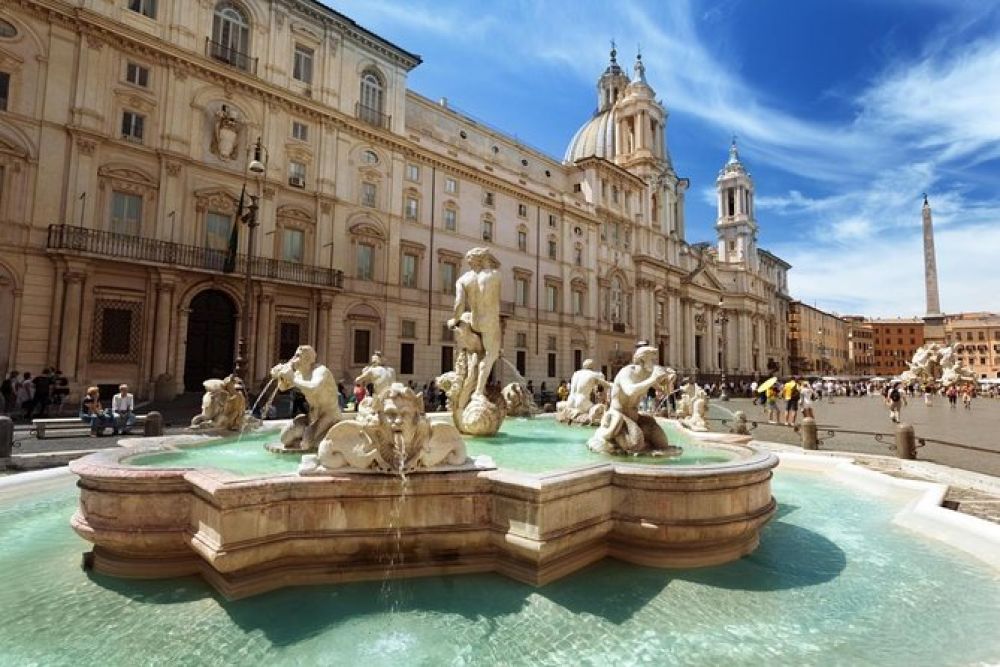

Piazza Navona is one of Rome's most renowned and vibrant squares, with a rich history that dates back to the 1st century AD. The square stands on the site of the Stadium of Domitian, built by Emperor Domitian in 85 AD, which once hosted ancient Roman games known as agones. Visitors to Piazza Navona can still see remnants of the ancient stadium in the surrounding architecture and under certain buildings.
During the Middle Ages, the market was transferred here, and the square became a hub for commercial and civic life. It wasn't until the 15th century that Piazza Navona began to take on its current form, with the construction of important buildings such as Palazzo Pamphilj and the Church of Sant'Agnese in Agone.
Tourism began to flourish significantly in the 17th century when Pamphili Pope Innocent X sponsored the transformation of the area, which led to the creation of the magnificent Baroque art masterpieces we see today, including Bernini's famous Fountain of the Four Rivers (Fontana dei Quattro Fiumi) completed in 1651.
Through the centuries, Piazza Navona has maintained its appeal as a popular gathering place: a spectacle of Baroque Roman architecture and art that attracts tourists from around the world. The square's allure is not just historical, but also lies in the vibrant street life -- artists painting, portrait sketchers, and a miscellany of vendors.
In the late 20th and early 21st centuries, Piazza Navona continued to be a must-see for visitors to Rome. Those who came to take in the Baroque architecture and the lively street atmosphere have also enjoyed the many restaurants and cafes that encircle the piazza, touting traditional Italian cuisine and offering a prime outdoor dining experience.
Recent trends in tourism to Piazza Navona include a growing interest in immersive and interactive experiences. Tourists are not only interested in taking photos of the monuments, but they also seek to understand the extensive history of the square through guided tours and storytellers.
Moreover, virtual reality experiences are starting to become a part of the visitors' experience, offering them a glimpse into ancient Roman times and the history of Piazza Navona. Tourism apps and augmented reality tools are enabling tourists to visualize the historic races and games once conducted in the ancient Domitian's stadium.
Sustainability has also become a significant trend, with increased awareness and measures to protect the heritage and integrity of Rome's iconic square. Efforts to manage visitor numbers, control pollution and maintain the monuments ensure that Piazza Navona remains an enchanting site for future visitors.
In summary, the history of tourism at Piazza Navona is a tapestry woven with threads of ancient Roman history, medieval markets, Renaissance patronage, and Baroque splendor. With its enduring beauty and vibrant street life, it remains one of Rome's most irresistible attractions, continuing to evolve with the latest global tourism trends while preserving its rich historical legacy.